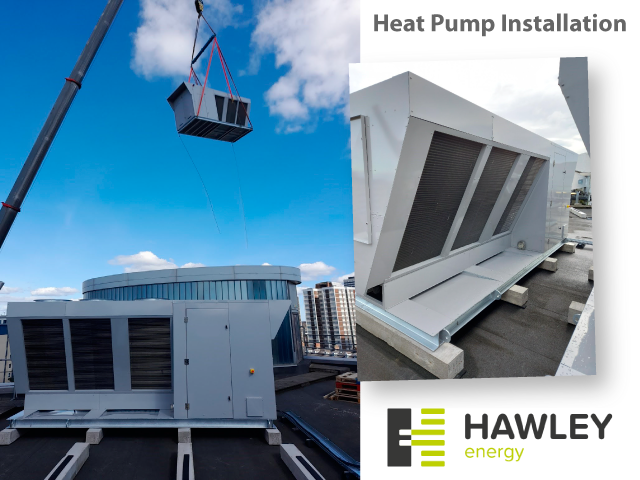
With so much confusing information available and the inconsistent reporting regarding the application and installation of heat pumps, it feels like it is worth taking some time to understand the real benefits and pitfalls of heat pumps. As someone who has a long history of working with this technology, I hope my thoughts prove useful.
Unfortunately, there is still the regurgitating of the old tropes that heat pumps ‘do not work in old buildings’ for example, or they are ‘too noisy’. We often hear they only work in countries with milder climates or naturally warm environments.
We can always find reasons not to change what we know, but I would suggest do not believe all you hear!
There are many types of heat pump to consider and decisions on choosing the right one takes expertise based on the specific location of the building. Without doubt; the pathway to a successful heat pump installation depends on the selection of skilled designers, installers & commissioners who understand how the technology works; how it is best applied and designs the correct plant for the correct system type / application. Also a key factor to success is that the correct sizing, installation and maintenance of a heat pump is critical to its continued peak performance / operation.
A disappointing observation we often see is heating engineers applying the design principle for traditional heating systems to heat pumps. This only contributes to the risk of sub-optimal performance and continued customer dissatisfaction.
It’s important to understand that heat pumps work by transferring heat from one place to another rather than producing heat through combustion. Because the heat produced by a heat pump is dependent on the temperature of its surrounding conditions (either the air, ground, or water temperature) its performance output is directly linked to its environment.
It’s true to say a heat pump cannot remove the same level of heat from an air temperature of minus 10 degrees Celsius as it would an air temperature of + 10 degrees C. That is not to say there is no heat available at -10 degrees, it’s just not as available.
A gas boiler by contrast provides heat by internal combustion and is not influenced by such external factors; therefore its performance remains the same regardless of ambient temperatures. This is why it is vital for any system designer to understand the type of system a heat pump will be serving and just as importantly the environmental conditions to which it will be exposed.
So why choose a heat pump? Great question, we’ve heard the negative all too often but let’s focus on the positive:
Environmentally Friendly: Heat pumps produce fewer greenhouse gas emissions compared to fossil fuel-based heating systems, making them a more environmentally friendly option.
Efficiency: Heat pumps typically work around a COP (coefficient of performance, in simple terms how much energy you put in to how much heat you get out) of between 2.5 – 4 (roughly between 240% & 400% efficiency) in heating mode. It should be noted a gas boiler turns around 90% of its fuel into heat so its efficiency is around 90%.
Consistent Comfort: Heat pumps provide consistent heating and cooling, maintaining a more even temperature in your building.
Long Lifespan: When properly maintained, heat pumps can have a longer lifespan than some traditional HVAC systems, with long term service requirements costing considerably less than a gas boiler.
Safety: Natural gas is highly combustible and when burnt, emits noxious fumes (carbon monoxide). Heat pumps are a self-contained (like your fridge & freezer) with more and more now filled with natural refrigerant such as C02 **
Financial Incentives: You may qualify for incentives, rebates, or tax credits when you install an energy-efficient heat pump, which can help offset the initial cost. One of the main government schemes is the BUS (Boiler Upgrade Scheme) which, to those who qualify, can provide up to £7000 in assistance when changing your exiting boiler to a heat pump.
Lose the charge: With the switch to electrified heating and the opportunity to remove gas from your domain, one major benefit is the removal of the gas standing charge. This is a fixed daily amount that you must pay no matter how much gas you use. The standing charge covers the cost of supplying a premise with gas.
There is no doubt that heat pumps will form an important part of the UK’s strategy to reduce carbon emissions, however, their effectiveness relies on their proper deployment considering regional climate, building envelopes, existing system design, control strategy, designer competence and installation expertise. With all these things considered, heat pumps have and will continue to deliver a viable & alternative heating solution.
If you want to know more or would like an assessment on your building for please contact us via our website for an appointment to discuss a tailored energy solution for your business
Author: Patrick Garforth
** Discussion on refrigerants & their GWP will be covered in further blogs


